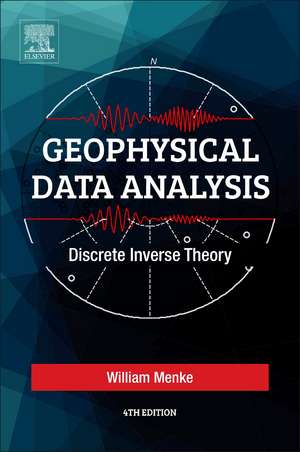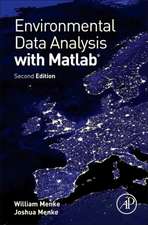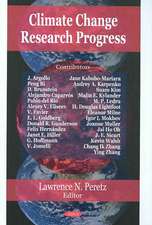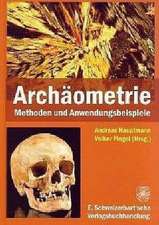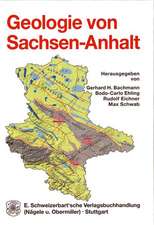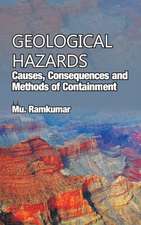Geophysical Data Analysis: Discrete Inverse Theory
Autor William Menkeen Limba Engleză Paperback – 11 apr 2018
Using problems and case studies, along with MATLAB computer code and summaries of methods, the book provides data scientists and engineers in geophysics with the tools necessary to understand and apply mathematical techniques and inverse theory.
- Includes material on probability, including Bayesian influence, probability density function and metropolis algorithm
- Offers detailed discussion of the application of inverse theory to tectonic, gravitational and geomagnetic studies
- Contains numerous examples, color figures and end-of-chapter homework problems to help readers explore and further understand presented ideas
- Includes MATLAB examples and problem sets
- Updated and refined throughout to bring the text in line with current understanding and improved examples and case studies
- Expanded sections to cover material, such as second-derivation smoothing and chi-squared tests not covered in the previous edition
| Toate formatele și edițiile | Preț | Express |
|---|---|---|
| Paperback (2) | 395.78 lei 5-7 săpt. | |
| ELSEVIER SCIENCE – 18 aug 2016 | 395.78 lei 5-7 săpt. | |
| ELSEVIER SCIENCE – 11 apr 2018 | 575.82 lei 5-7 săpt. | |
| Hardback (1) | 0.00 lei Indisponibil | |
| ELSEVIER SCIENCE – 3 oct 1989 | 0.00 lei Indisponibil |
Preț: 575.82 lei
Preț vechi: 632.77 lei
-9% Nou
110.18€ • 115.28$ • 91.53£
Carte tipărită la comandă
Livrare economică 26 martie-09 aprilie
Specificații
ISBN-10: 0128135557
Pagini: 352
Dimensiuni: 191 x 235 mm
Greutate: 0.61 kg
Ediția:4
Editura: ELSEVIER SCIENCE
Public țintă
Geophysicists, Seismologists, Geodesists, Geodynamicists, Tectonophysicists, Rock Physicists and GeochemistsCuprins
1. Describing Inverse Problems 2. Some Comments on Probability Theory 3. Solution of the Linear, Gaussian Inverse Problem, Viewpoint 1: The Length Method 4. Solution of the Linear, Gaussian Inverse Problem, Viewpoint 2: Generalized Inverses 5. Solution of the Linear, Gaussian Inverse Problem, Viewpoint 3: Maximum Likelihood Methods 6. Nonuniqueness and Localized Averages 7. Applications of Vector Spaces 8. Linear Inverse Problems and Non-Gaussian Statistics 9. Nonlinear Inverse Problems 10. Factor Analysis 11. Continuous Inverse Theory and Tomography 12. Sample Inverse Problems 13. Applications of Inverse Theory to Solid Earth Geophysics
Descriere
Geophysical Data Analysis: Diverse Inverse Theory, Fourth Edition is a revised and expanded introduction to inverse theory and tomography as it is practiced by geophysicists. It demonstrates the methods needed to analyze a broad spectrum of geophysical datasets, with special attention to those methods that generate images of the earth. Data analysis can be a mathematically complex activity, but the treatment in this volume is carefully designed to emphasize those mathematical techniques that readers will find the most familiar and to systematically introduce less-familiar ones.
Using problems and case studies, along with MATLAB computer code and summaries of methods, the book provides data scientists and engineers in geophysics with the tools necessary to understand and apply mathematical techniques and inverse theory.
- Includes material on probability, including Bayesian influence, probability density function and metropolis algorithm
- Offers detailed discussion of the application of inverse theory to tectonic, gravitational and geomagnetic studies
- Contains numerous examples, color figures and end-of-chapter homework problems to help readers explore and further understand presented ideas
- Includes MATLAB examples and problem sets
- Updated and refined throughout to bring the text in line with current understanding and improved examples and case studies
- Expanded sections to cover material, such as second-derivation smoothing and chi-squared tests not covered in the previous edition
Recenzii
Praise for the second edition:"The author has produced a meaningful guide to the subject; one which a student (or professional unfamiliar with the field) can follow without great difficulty and one in which many motivational guideposts are provided....I think that the value of the book is outstanding....It deserves a prominent place on the shelf of every scientist or engineer who has data to interpret." --GEOPHYSICS
"As a meteorologist, I have used least squares, maximum likelihood, maximum entropy, and empirical orthogonal functions during the course of my work, but this book brought together these somewhat disparate techniques into a coherent, unified package....I recommend it to meteorologists involved with data analysis and parameterization." --Roland B. Stull, THE BULLETIN OF THE AMERICAN METEOROLOGICAL SOCIETY
"This book provides an excellent introductory account of inverse theory with geophysical applications....My experience in using this book, along with supplementary material in a course for the first year graduate students, has been very positive. I unhesitatingly recommend it to any student or researcher in the geophysical sciences." --PACEOPH
